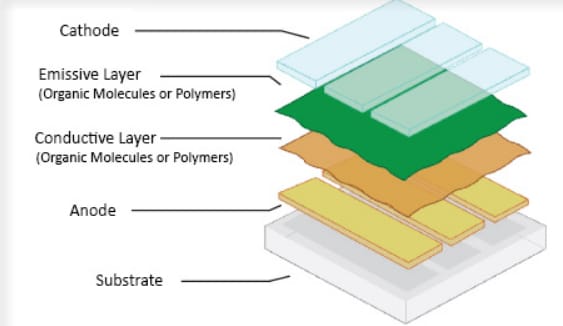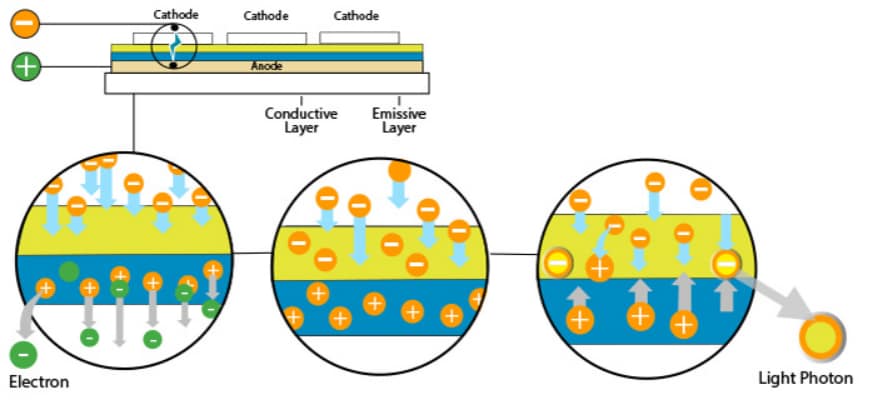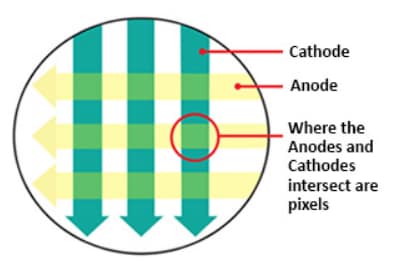
Newhaven Display OLED Display Modules
Newhaven Display OLED Display Modules are organic LEDs offering brighter, higher contrast displays with faster response times and wider viewing angles. These displays consume less power than the conventional VFD, LED, or LCD Displays and are classified into character OLEDs and Graphic OLEDs. OLED displays are self-illuminating and require no backlight for maximum visibility in all environments, making them significantly thinner than standard displays. The Newhaven Display OLED Displays have a built-in controller, a single low-power supply and are available in several color variants and dimensions.
Features
- Thin designs
- Self-illuminated, no backlight necessary
- Low power consumption
- High brightness
- Serial or parallel MPU interface
- RoHS compliant
OLED Structure

The OLED displays feature a layer of organic material between two conductors, an anode and a cathode. These conductors are placed between a seal (glass top plate) and a substrate (glass bottom plate). When an electric current is applied to the conductors, the organic materials produce a bright electroluminescent light visible through the outermost layer of glass.
How OLEDs Emit Light

1. Electrical current flows from the Cathode to the Anode through the organic layers, giving electrons to the emissive layer and removing electrons from the conductive layer.
2. Removing electrons from the conductive layer leaves holes that need to be filled with electrons in the emissive layer.
3. The holes jump to the emissive layer and recombine with the electrons. As the electrons drop into the holes, they release their extra energy as light.
How OLEDs Create Pixels

The anodes and the cathodes are arranged perpendicular to each other and that's how pixels are created. The electric current applied to the selected strips of anodes and cathodes determines which pixels get turned on and which pixels remain off. The brightness of each pixel is proportional to the amount of applied current.






